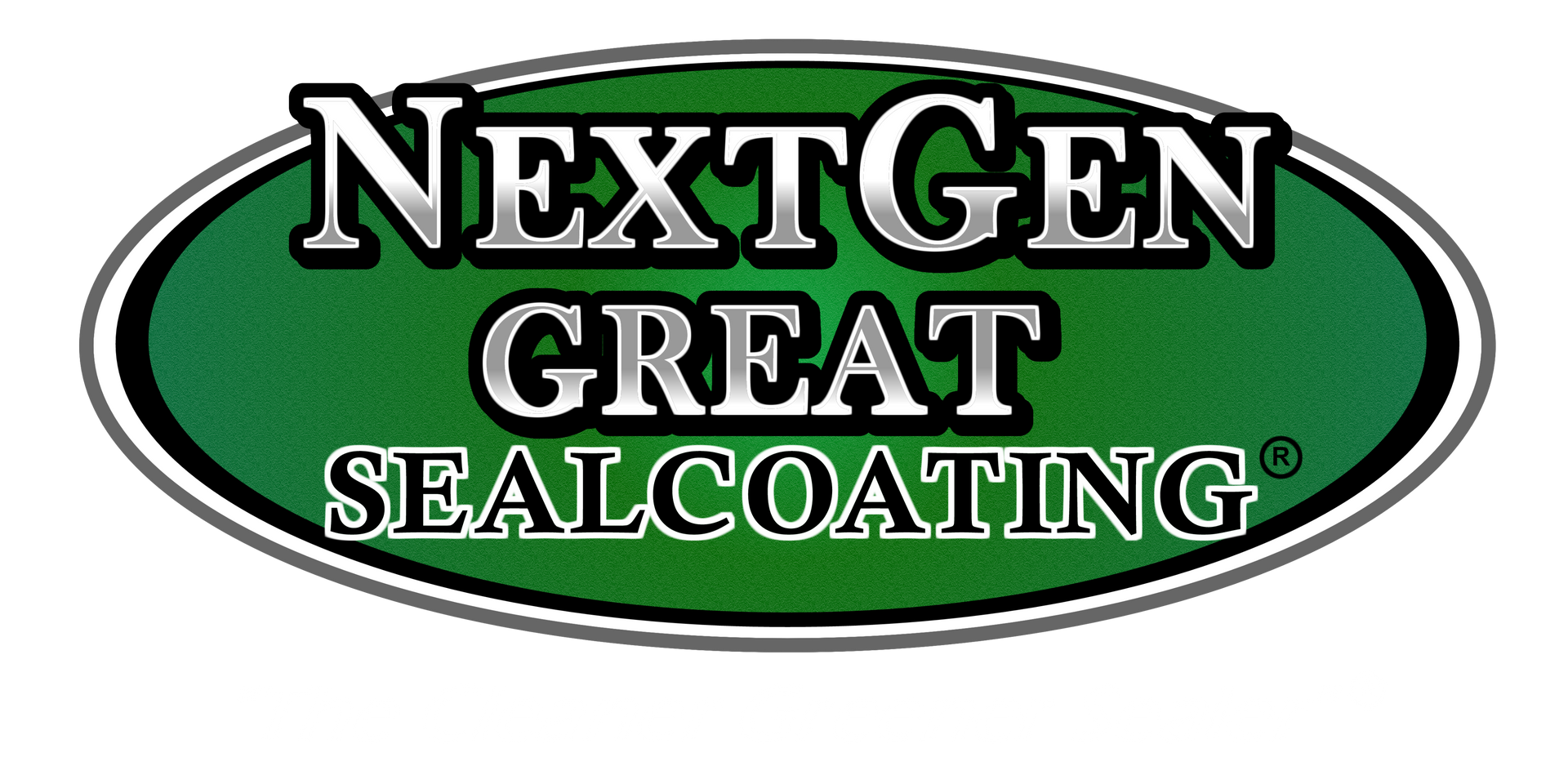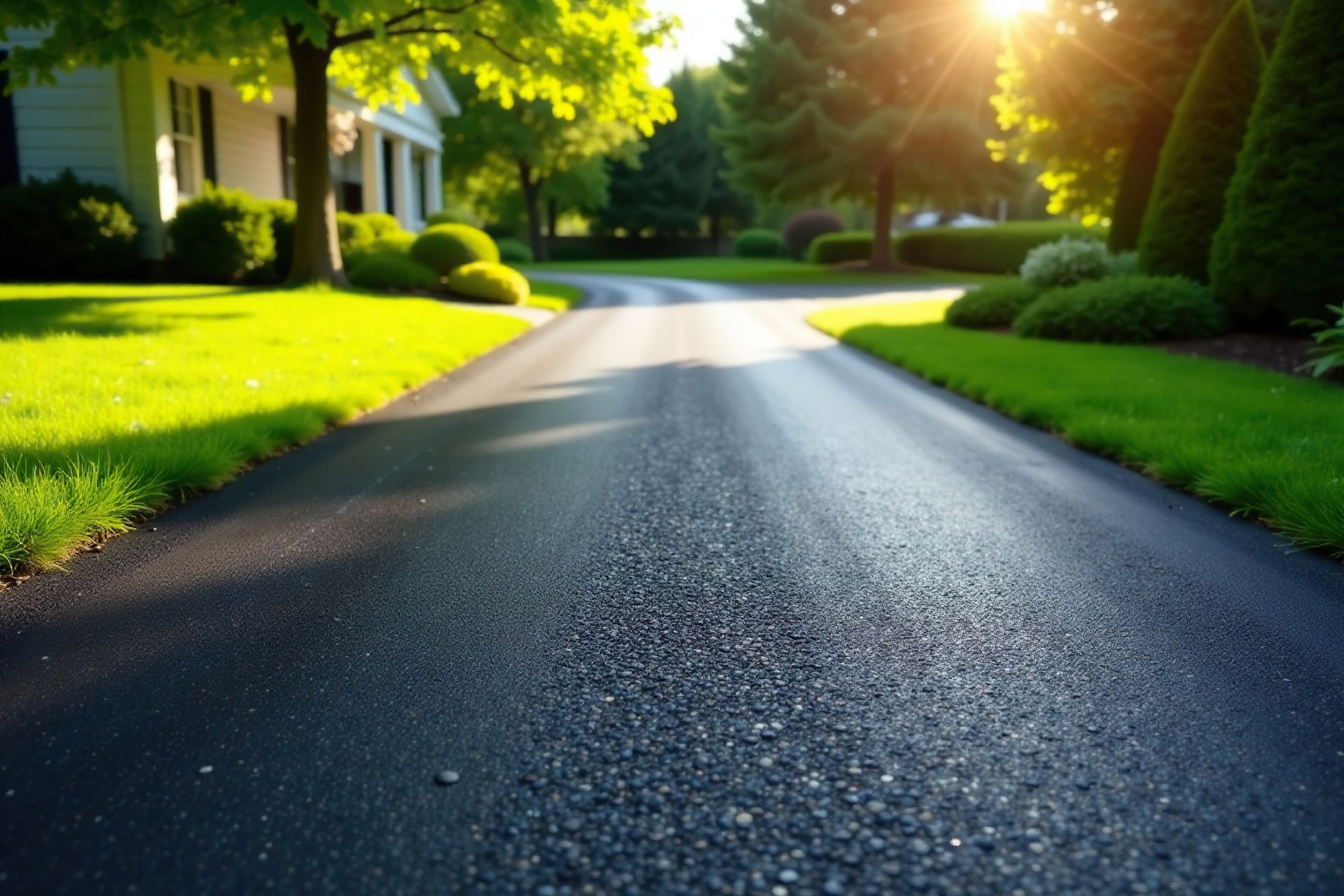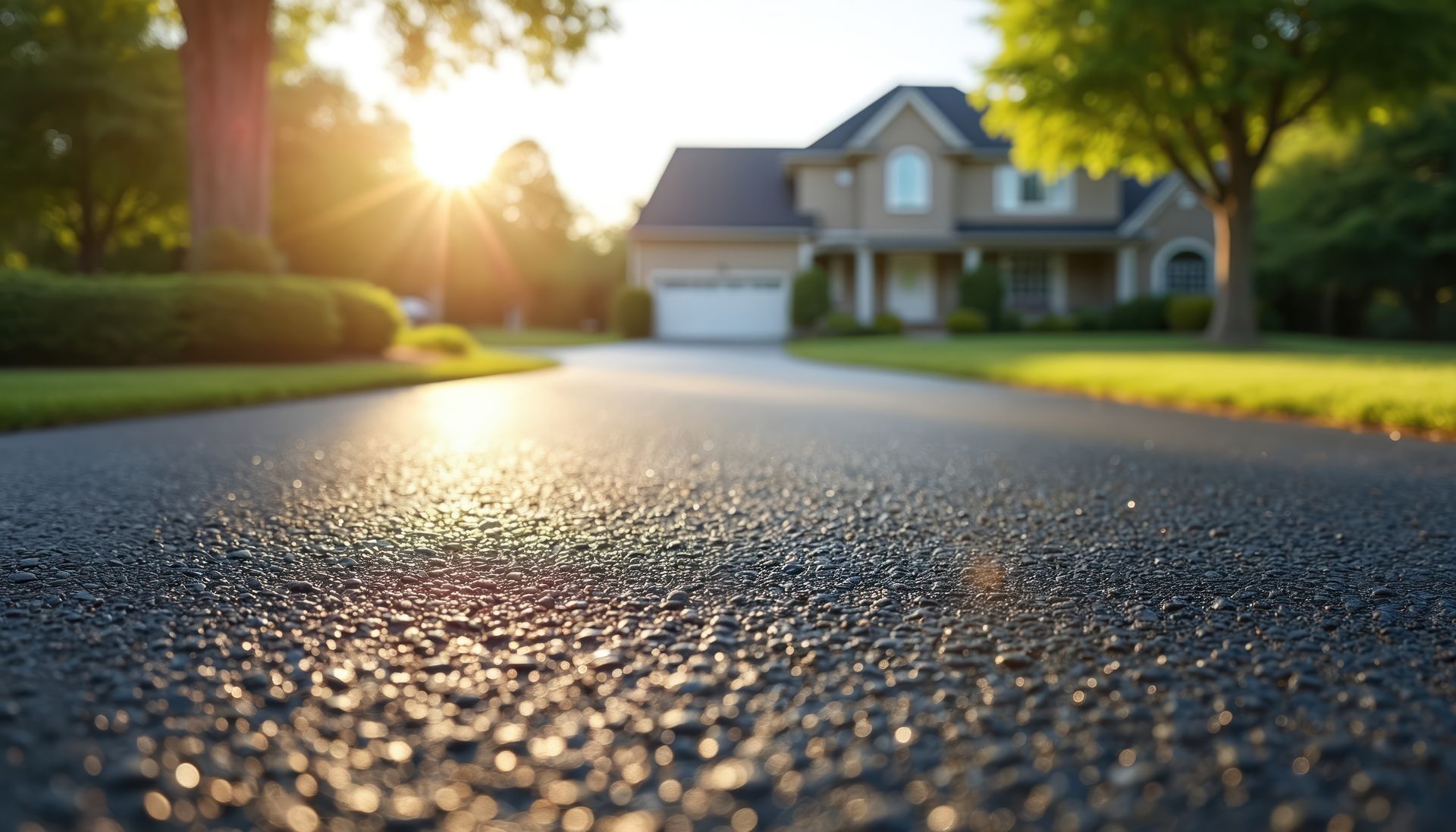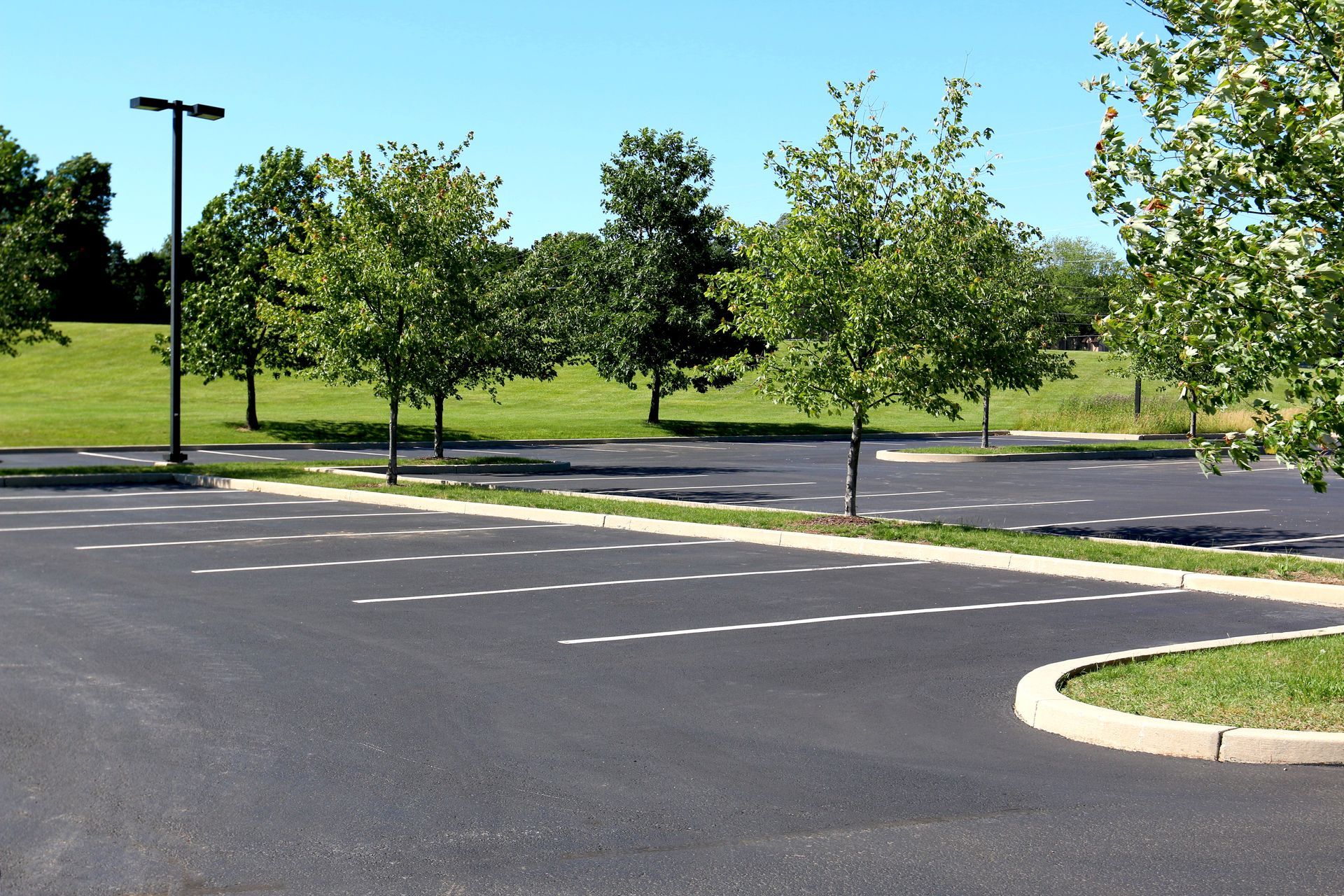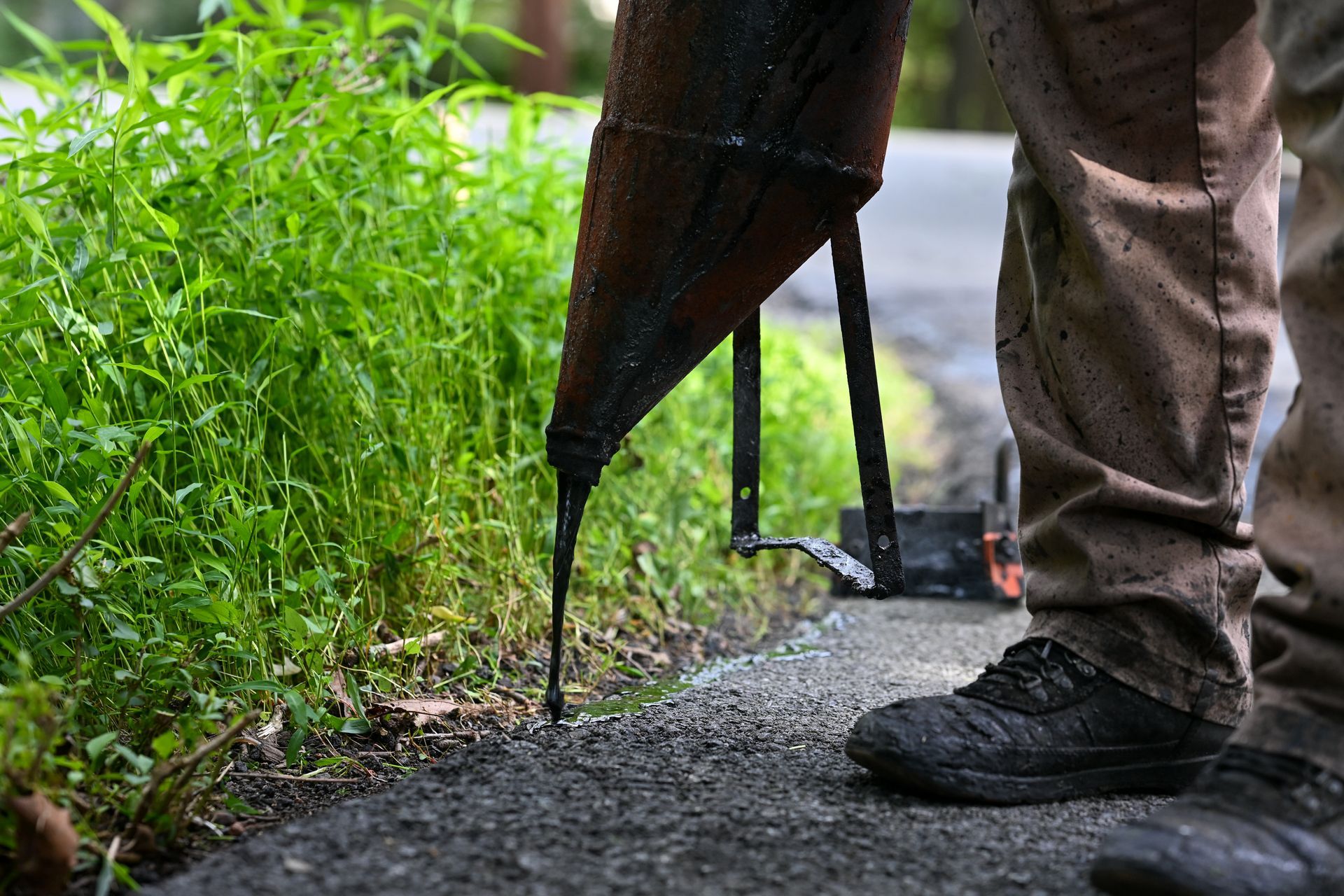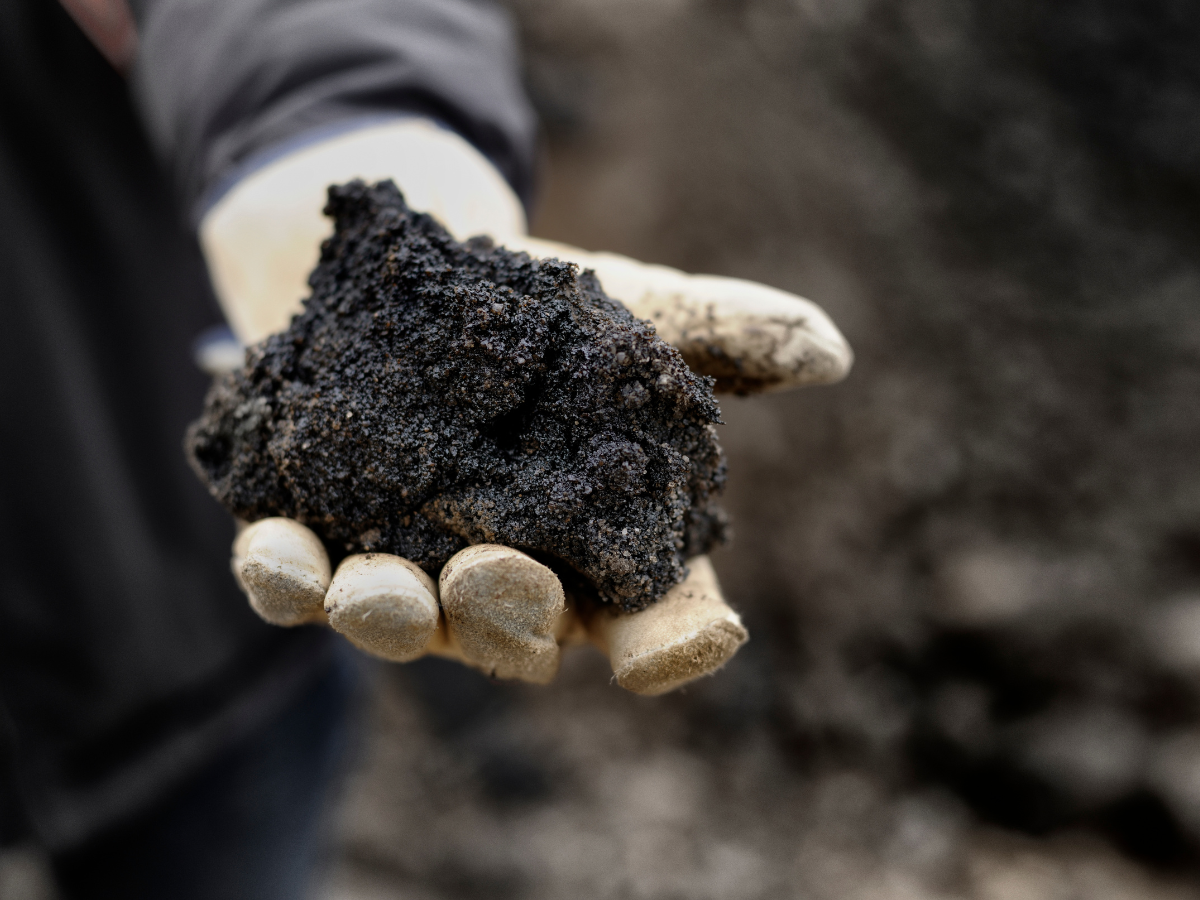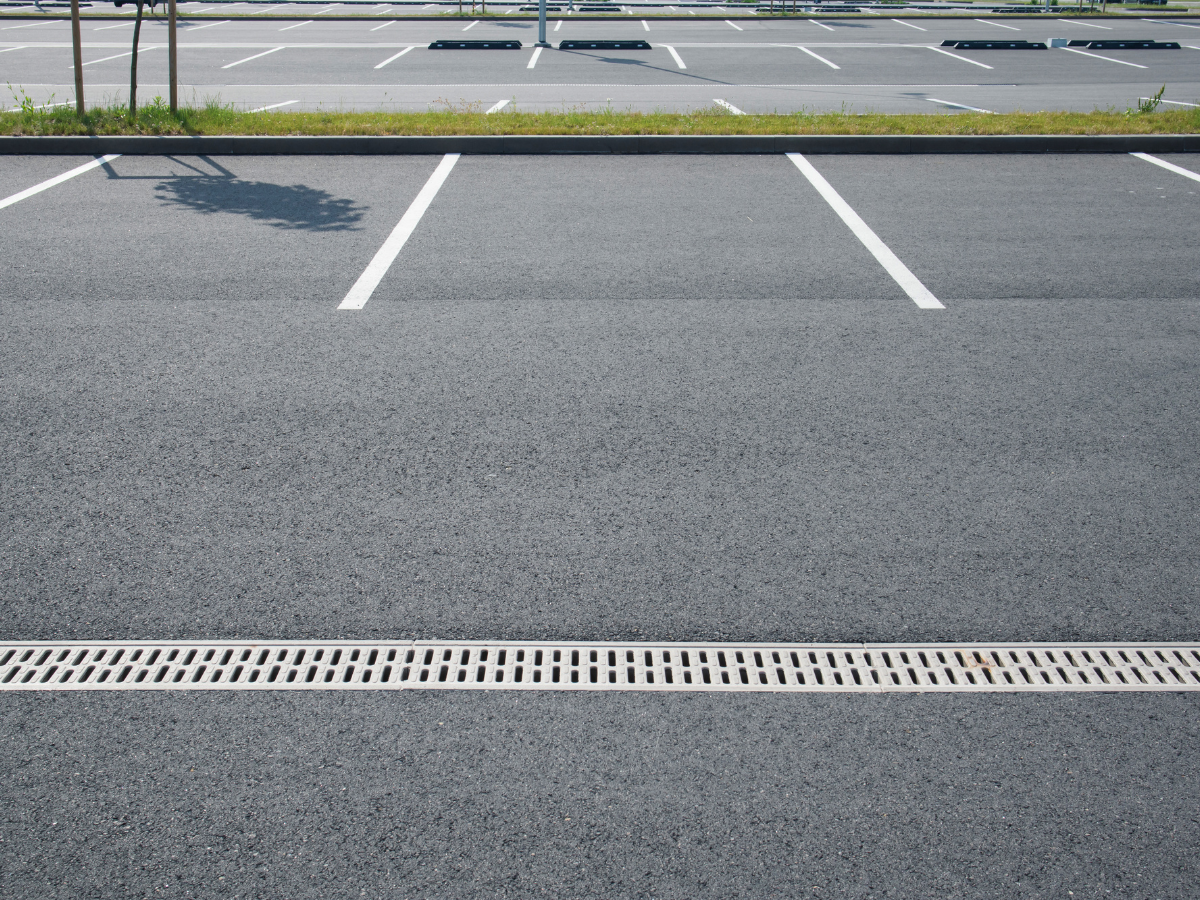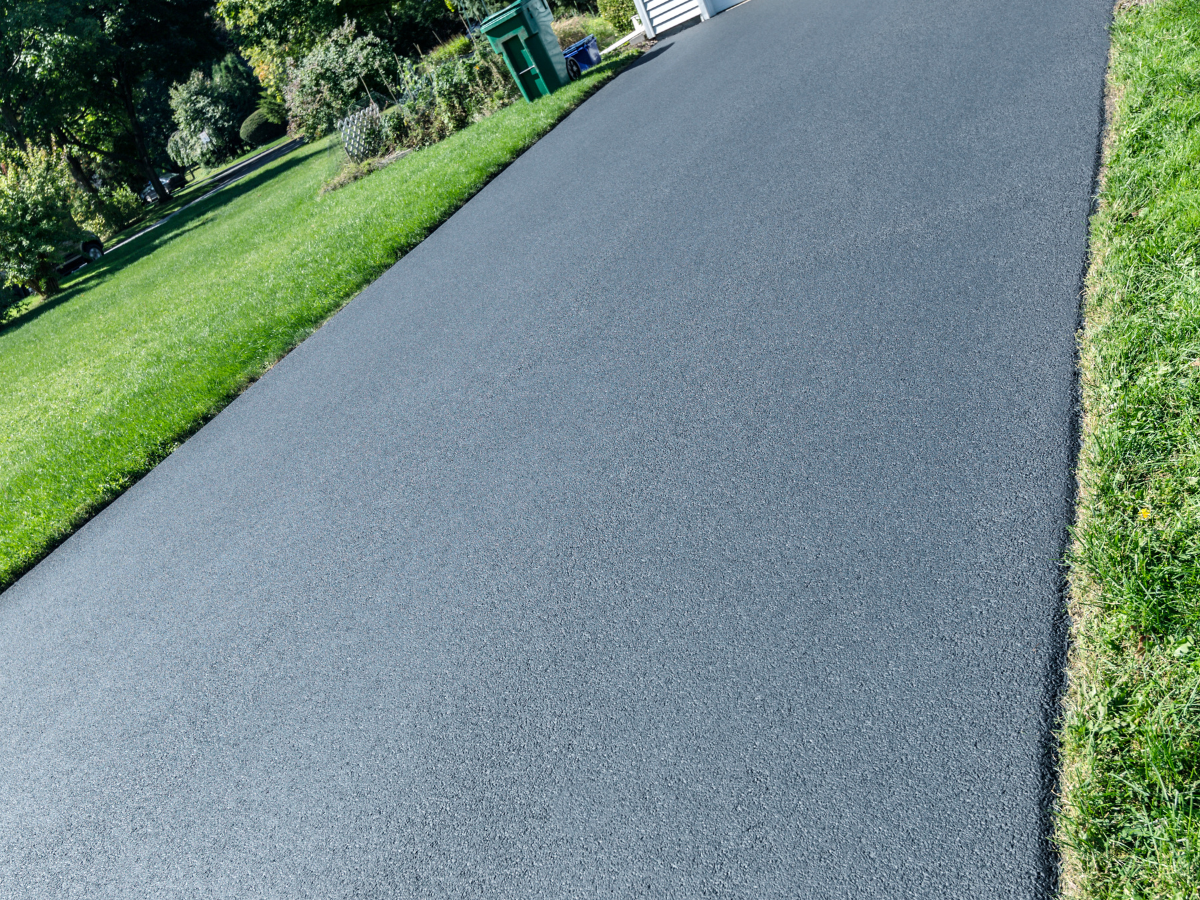What Is the Science Behind Asphalt Sealcoating?
Asphalt sealcoating plays a crucial role in extending the lifespan of paved surfaces, particularly driveways, parking lots, and roads. While it may seem like a simple application of black liquid, the science behind asphalt sealcoating is much more intricate. It involves a blend of materials that protect the asphalt from harsh weather, chemicals, and the wear and tear of daily traffic. In this blog, we’ll dive into the science behind asphalt sealcoating, how it works, and why it’s essential for maintaining the integrity of your paved surfaces.
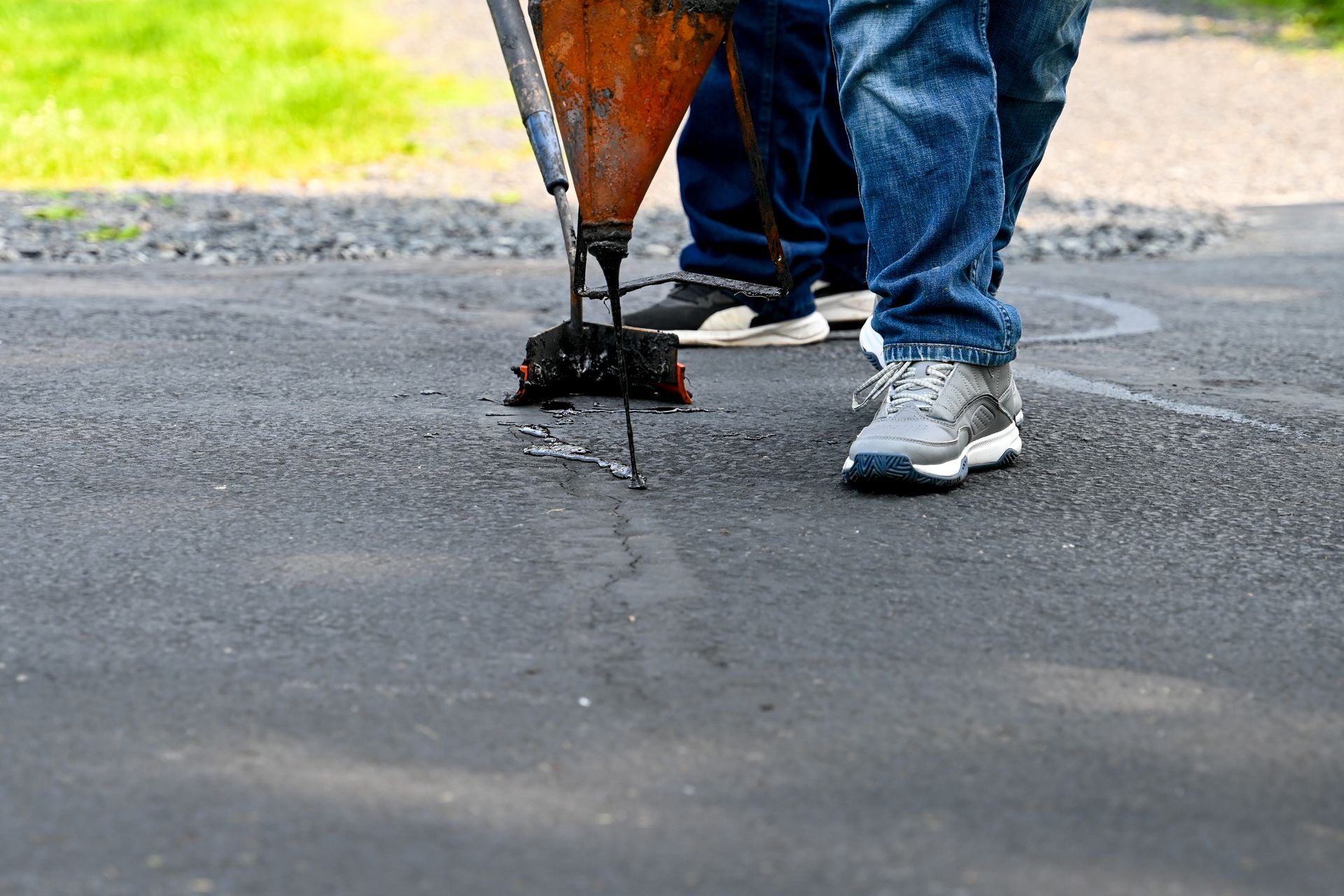
Understanding Asphalt Sealcoating
Asphalt sealcoating is a protective layer applied over asphalt surfaces to enhance durability and maintain appearance. Sealcoating forms a barrier that protects the underlying asphalt from water, oil, ultraviolet (UV) rays, and harsh chemicals, all of which can cause damage over time. The primary ingredients in asphalt sealcoating include coal tar, asphalt emulsion, and water-based binders. These ingredients work together to provide a durable, long-lasting finish.
- Coal Tar: Traditionally, coal tar has been a primary ingredient in asphalt sealcoating due to its ability to withstand chemicals, UV rays, and extreme weather conditions. It is particularly effective at resisting oil spills and preventing the erosion of asphalt.
- Asphalt Emulsion: Asphalt emulsions, which are water-based, are another commonly used component in sealcoating. They are more eco-friendly than coal tar and are often used in areas with stricter environmental regulations.
- Water and Fillers: Water helps to dilute the sealant for easier application, while fillers like sand or clay add thickness and improve texture, providing better coverage and durability.
The combination of these materials creates a coating that adheres well to the asphalt and forms a protective shield against the elements.
Why Asphalt Sealcoating Works: The Chemistry Behind It
The key to asphalt sealcoating lies in the chemistry that allows the materials to bond with the asphalt and form a protective layer. The science behind sealcoating involves several physical and chemical processes:
- Adhesion: Sealcoating materials must bond to the surface of the asphalt, creating a strong connection. The chemical properties of the sealant ingredients, like coal tar or asphalt emulsions, allow them to bond with the asphalt surface, creating a long-lasting layer of protection.
- Hydrophobicity: One of the most critical properties of sealcoating is its ability to repel water. When asphalt is exposed to water, the surface can become soft, leading to cracks and degradation. The hydrophobic properties of sealcoating prevent water from penetrating the surface and causing damage.
- UV Protection: UV rays from the sun can cause asphalt to break down, leading to cracks and fading. Sealcoating protects the surface by blocking harmful UV rays, which helps maintain the integrity and color of the asphalt.
The Benefits of Asphalt Sealcoating
The primary reason why asphalt sealcoating is applied is to extend the lifespan of asphalt surfaces. But beyond that, there are several key benefits to sealcoating:
- Water Resistance: Sealcoating prevents water from seeping into the asphalt, which can lead to potholes and cracks. By keeping moisture out, it helps to prevent the formation of cracks and reduces the need for costly repairs.
- Protection from Chemicals: Asphalt is vulnerable to damage from oils, gasoline, and other chemicals. Sealcoating acts as a barrier to prevent these substances from penetrating the asphalt, thereby reducing the risk of deterioration.
- Improved Appearance: Sealcoating gives asphalt surfaces a sleek, fresh black finish that enhances curb appeal. It also helps to mask stains and imperfections, giving the surface a more uniform appearance.
- Temperature Resistance: In hot and cold climates, asphalt can expand and contract, leading to cracks and fissures. Sealcoating provides a flexible layer that moves with the asphalt, preventing cracks from forming and protecting against thermal damage.
How Sealcoating Extends the Life of Your Pavement
Properly maintained asphalt surfaces can last for decades, but without regular care, they can deteriorate much quicker. Sealcoating is one of the most effective ways to extend the life of your pavement. When applied regularly (typically every 2-3 years), it creates a protective shield that prevents the asphalt from becoming brittle, cracked, or damaged by the elements.
- Prevention of Oxidation: Over time, the asphalt’s binder begins to oxidize and lose its flexibility. Sealcoating slows down this process, preserving the elasticity of the pavement and extending its lifespan.
- Minimized Cracking: By protecting the asphalt from the sun’s UV rays and moisture, sealcoating helps to prevent the formation of cracks, which are the beginning of larger issues like potholes and surface degradation.
Conclusion
Asphalt sealcoating is an essential maintenance step that not only enhances the appearance of your driveway or parking lot but also extends its lifespan. By understanding the science behind sealcoating—how it protects against water, UV rays, and chemical exposure—you can appreciate its importance in maintaining your pavement. Whether you have a commercial lot or a residential driveway, investing in sealcoating is a smart decision that will save you money on repairs in the long run.
At NextGen Great Sealcoating, we specialize in providing high-quality sealcoating services to protect your asphalt surfaces. Contact us today for expert sealcoating services that will keep your pavement looking great and functioning well for years to come.
